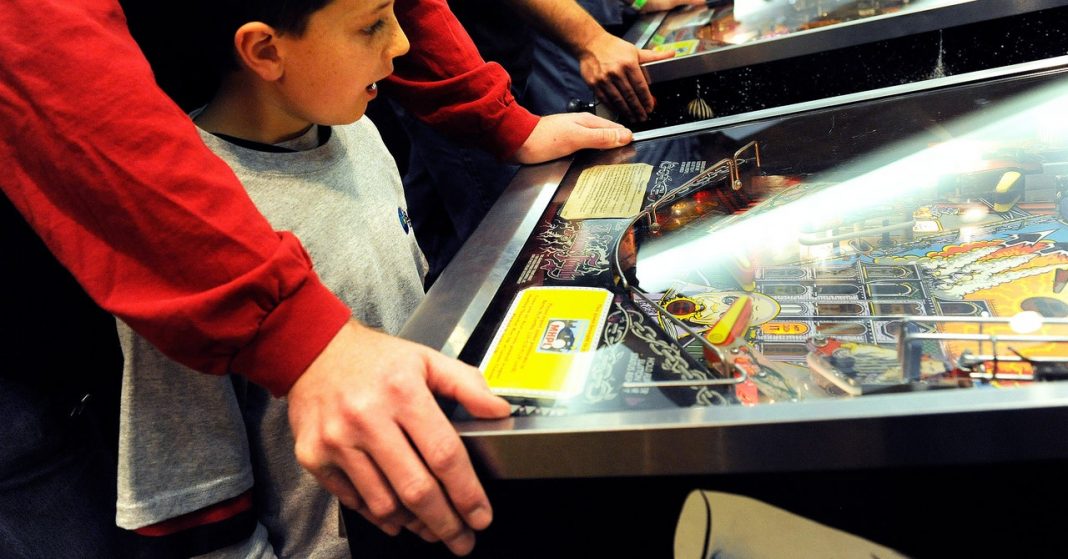The Addams Family also came packed with a Byzantine-yet-accessible set of rules and storyline objectives that appealed to both average and skilled players. That’s huge in arcades, where people often make choices about which game to play based on familiarity with the property featured (The Addams Family, Super Mario Bros., etc.) and how well they think they can do. “For the average Joe, one of the difficulties with pinball is about a sense of intimidation,” Sharpe explains. “We get to certain ages where the loss of innocence is such that we become much more entrenched in not wanting to look foolish.’”
But it’s not just novices who flock to the game. The Addams Family attracts pros too. “It’s an incredibly fun game to play,” says Jane Verwys, a nationally ranked pinball player and Twitch streamer from Chicago. “The callouts and humor in it go a long way, and it’s got one of the best multi-ball starts of all time, which is when you lock some balls and then all three of them come out at once. It’s a high-scoring opportunity, and when you get it, the machine does this lightning effect that’s super cool.”
Of course, it also didn’t hurt that The Addams Family was released at a time when arcade consumers had somehow found their way back to pinball. From about 1987 to the mid-’90s, Sharpe says, pinball “had somewhat of a heyday.” There were more than 3 million pinball machines in active operation worldwide, and manufacturers were pushing out about 100,000 new machines every year.
Soon enough, though, bar patrons who might have stopped into their local pub after work and to drop a quarter in a pinball machine grew more interested in pool and shooting darts. Arcade games were replaced by flat-screen TVs and bar-top touch screen consoles. Venues decided they needed the floor space that pinball machines once took up. Manufacturers like Bally, who made The Addams Family, either closed down or started to restructure, focusing on casino games and slot machines rather than arcade fare.
Now, much of the buying power in pinball is held by players with a bit of nostalgia. “People who were in college 10 years before now have discretionary income,” says Sharpe. “They might be married with some young kids, and they’ll think, ‘I’m going to buy a machine and put it down in the basement in my man-cave.’ And then of course they get another one because you never want just one.”
These days, a vintage Addams Family pinball machine will set a person back roughly $10,000 on the resale market—and that’s not including the cost of maintenance and upkeep owners need to spring for if they want to keep the game operational. “Even though a lot were made, there’s only ever going to be less and less of them over time, unless it gets remade,” says Verwys. “Some serious collectors say they’ve got to have an Addams Family, but it’s also not the easiest game to maintain just because there’s four flippers and turning parts in the hand coming out and a bunch of magnets. If they’ve just been sitting in a hotel arcade and not well maintained, some don’t play very well at all.”
Even non-collectors see the game’s value. Tim Arnold, owner of the Pinball Hall of Fame in Las Vegas, says that his Addams Family machine is always busy. Whereas most of his 20-year-old games will make a buck or two, his Addams Family always has “like $100 in it,” when he opens the till.
“There’s something magical about that game,” Arnold says. “You could try for the next year to analyze what it was that makes it great, but you’ll just keep coming back to the simple statement that if the industry knew exactly how to make great games, that’s all they’d make. The difference between a great game, a good game, and a bad game can be so minute. You know, you change one thing and it’s not great soup anymore. It’s just soup.”
